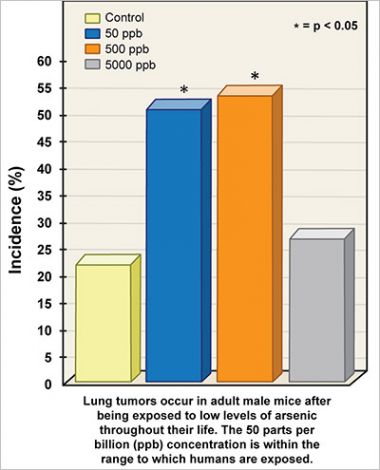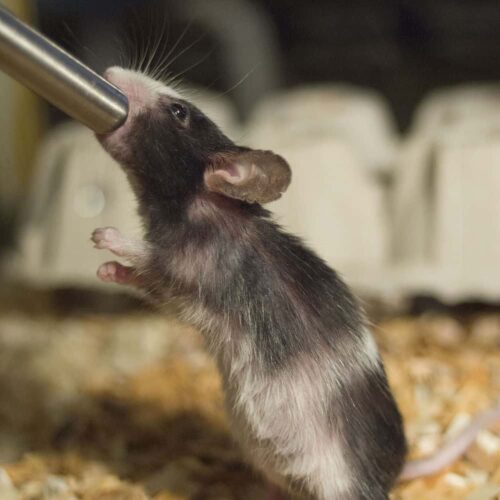Introduction
Researchers at the National Institutes of Health fed mice very low doses of arsenic and were surprised to find that many of them developed lung cancer, according to a study just published.
What made the results so surprising was that in previous studies, mice were fed extremely high doses of arsenic before they developed excess tumors. In the new study, mice fed lower doses of arsenic were more likely to develop tumors. The lowest dose is similar to amounts some people with private wells in the United States drink.
The Center for Public Integrity recently exposed how lobbying by pesticide companies that sell weed killers containing arsenic has delayed the EPA from issuing its findings and taking action on them for years.
“This is the first study to show tumor development in animals exposed to very low levels of arsenic, levels similar to which humans might be exposed,” Michael Waalkes, lead author on the paper and director of the National Toxicology Program Laboratory, said in a press release. “The results are unexpected and certainly give cause for concern.”
Studies in countries such as Taiwan, Chile and Bangladesh have shown that people who drink high doses of arsenic get cancer skin, bladder and lung cancer. High levels of arsenic in well water in Bangladesh created one of the worst environmental disasters in history.
Extrapolating from those studies, scientists with the U.S. Environmental Protection Agency have tentatively concluded that arsenic is a serious problem at low doses. A draft report on arsenic concluded that for every 100,000 women who drink the legal limit of arsenic in water each day, 730 will get lung or bladder cancer from it.
Some scientists argue that there is a threshold dose, below which arsenic is harmless. But the new study casts serious doubt on this contention.

NIH researchers fed adult mice arsenic before breeding and continued to give offspring arsenic in water throughout their two-year lives. Fifty-one percent of the male mice given arsenic at 50 parts per billion developed tumors, compared to 22 percent of mice given no arsenic. Fifty-four percent of male mice given 10 times that amount of arsenic also developed tumors. But there was no significant increase in tumors among mice given a much higher dose of 5 parts per million.
Researchers were not expecting worse effects at lower doses and say their findings raise concern about levels of arsenic to which people are exposed. The current drinking-water limit in the United States is 10 parts per billion.
“Although this is only one study, it adds to a growing body of evidence showing adverse health effects from very low exposures to arsenic, raising the possibility that no level of arsenic appears to be safe,” Linda Birnbaum, director of the National Institute of Environmental Health Sciences and the National Toxicology Program, said in a statement.
Read more in Environment
Environment
National Academy of Sciences agrees with EPA that formaldehyde causes cancer
Environment
Is this U.S. coal giant funding violent union intimidation in Colombia?
Alabama-based Drummond Co. sued for alleged ties to group behind deaths, threats




Join the conversation
Show Comments